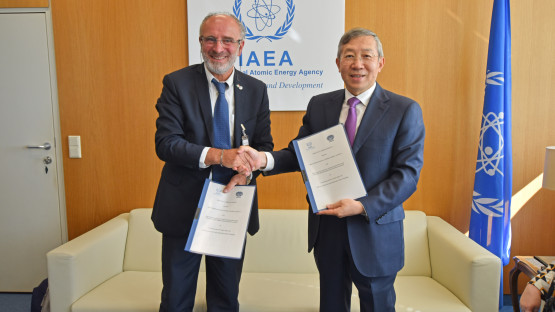On 10 September, the IAEA and the Italian Society for Non-Destructive Testing Monitoring Diagnostics (AIPnD) signed Practical Arrangements, establishing a framework for future cooperation in the application of non-destructive testing (NDT) between the two organizations. The first such Arrangements developed between the Agency and the AIPnD, the document covers a period of three years, from 2019 to 2022.
The Practical Arrangements were signed on behalf of the IAEA by Dazhu Yang, Deputy Director General and Head of the Department of Technical Cooperation, and by Ezio Tuberosa, President of AIPnD, who was joined by the Resident Representative of Italy to the IAEA, HE Maria Assunta Accili Sabbatini, and by Daniele Bisi and Aldo Canova, Vice President and General Secretary of AIPnD, respectively.







